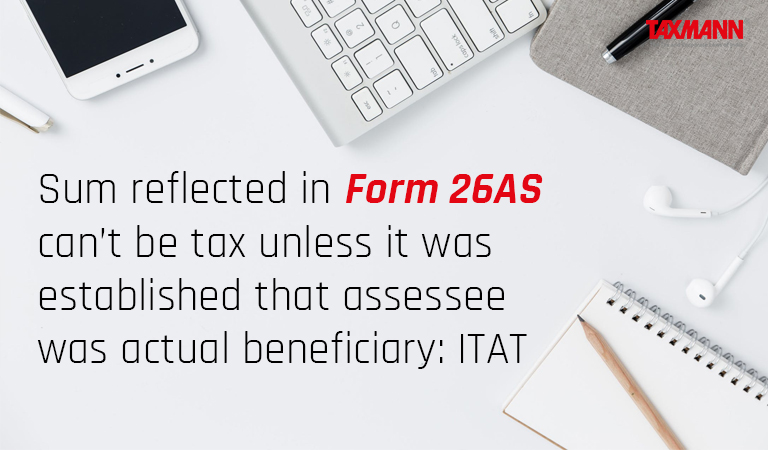Sum reflected in Form 26AS can’t be tax unless it was established that assessee was actual beneficiary: ITAT
- Blog|News|Income Tax|
- 2 Min Read
- By Taxmann
- |
- Last Updated on 30 September, 2021
Case Details: Dr Swati Mahesh Vinchurkar v. DCIT - [2021] 130 taxmann.com 320 (Surat-Trib.)
Judiciary and Counsel Details
-
- Pawan Singh, Judicial Member and Dr. Arjun Lal Saini, Accountant Member
- Pallav Desai, CA for the Appellant. Ms. Anupma Singla – Sr. DR for the Respondent.
Facts of the Case
Assessee was a doctor by profession and was a resident of Surat City, State of Gujarat. He filed a return claiming a refund of Rs. 450. However, the CPC, Bangalore, while processing the return of income, made the addition of Rs. 5,63,952.
The CPC made these additions based on the statement of TDS in Form-26AS, being tax deducted at source (TDS) by Electricity Distribution Division Gajraula-UP and other entries by way of salary income and TDS deducted by Electricity test division Amroha-UP. However, the assessee denied having earned any such income on which tax was deducted. On appeal, the CIT(A) confirmed the additions made by CPC. Aggrieved-assessee filed the instant appeal before the Tribunal.
ITAT Held
The Tribunal held that the assessee had no concern or casual connection or any relation with the alleged deductor; the entry of TDS in the Form-26AS issued to the assessee was wrong. The assessee submitted her response to CPC Bangalore and before CIT(A) and specifically denied having earned such income.
Further, it was submitted by the assessee that it is far from the imagination that the assessee served such organization, which is based 1000 KM away from the residence of the assessee.
Once the assessee denied such transaction, the onus was on the revenue to establish that the assessee had entered into any such transactions. The CIT(A) had not made any verification or effort to verify such transactions. There was the possibility of entering the wrong PAN, which belonged to the assessee, and the assessee had been unnecessarily put under mental pressure by making such additions despite denying such income. Thus, addition merely based on TDS reflected in the Form-26AS, ignoring the submissions of the assessee, was liable to be deleted.
List of Cases Referred to
-
- ACIT v. Zee Media Corpn. Ltd. [IT Appeal Nos. 2166 & 2695 (Mum.) of 2016, dated 16-4-2018] (para 3)
- Seal For Life India (P.) Ltd. v. Dy. CIT [2018] 96 taxmann.com 645/173 ITD 229 (Ahd. – Trib.) (para 3)
- Ravindra Pratap Thareja v. ITO [2015] 60 taxmann.com 304/154 ITD 633 (Jabalpur – Trib.) (para 3).
Disclaimer: The content/information published on the website is only for general information of the user and shall not be construed as legal advice. While the Taxmann has exercised reasonable efforts to ensure the veracity of information/content published, Taxmann shall be under no liability in any manner whatsoever for incorrect information, if any.

Taxmann Publications has a dedicated in-house Research & Editorial Team. This team consists of a team of Chartered Accountants, Company Secretaries, and Lawyers. This team works under the guidance and supervision of editor-in-chief Mr Rakesh Bhargava.
The Research and Editorial Team is responsible for developing reliable and accurate content for the readers. The team follows the six-sigma approach to achieve the benchmark of zero error in its publications and research platforms. The team ensures that the following publication guidelines are thoroughly followed while developing the content:
- The statutory material is obtained only from the authorized and reliable sources
- All the latest developments in the judicial and legislative fields are covered
- Prepare the analytical write-ups on current, controversial, and important issues to help the readers to understand the concept and its implications
- Every content published by Taxmann is complete, accurate and lucid
- All evidence-based statements are supported with proper reference to Section, Circular No., Notification No. or citations
- The golden rules of grammar, style and consistency are thoroughly followed
- Font and size that’s easy to read and remain consistent across all imprint and digital publications are applied








 CA | CS | CMA
CA | CS | CMA


